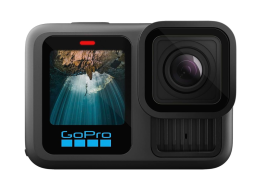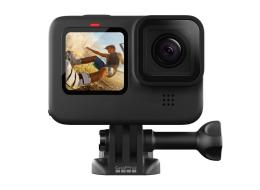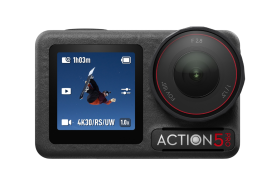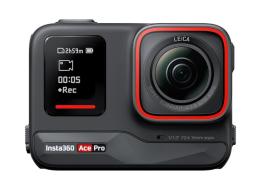Understanding Action Camera Specs: Aperture, ISO, and Noise

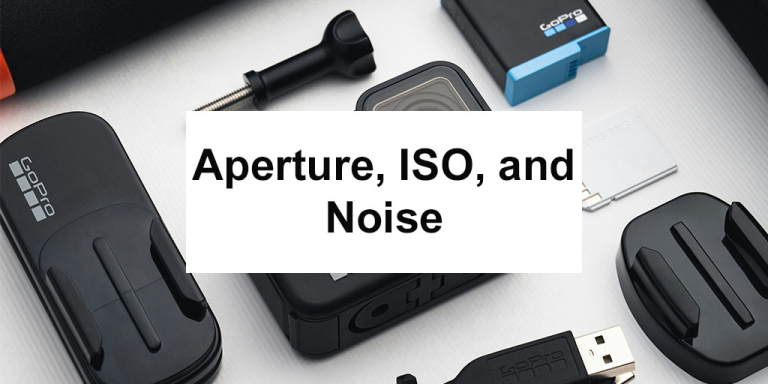
Action cams are often used in bright daylight – skiing under the sun or surfing on clear days – where they excel. But what about when the sun gets low, or you go indoors, or you want to film a campfire at night?
Low-light performance is where small cameras traditionally struggle. Let’s break down what camera specs and features matter most for low-light, and how to interpret them.
Key factors for low-light are analogous to eyes in the dark: you want big pupils (wide aperture), a big retina (large sensor) to catch more light, and possibly higher sensitivity (ISO) – though high ISO comes at the cost of “visual noise” similar to grain.
Lens Aperture (f-stop)
This is how wide the lens iris opens. On action cams, the aperture is typically fixed (not adjustable). You’ll see something like f/2.8 or f/2.5 in the specs. A lower f-number means a wider aperture, which lets in more light. For example, f/2.8 allows twice as much light as f/4 would. Most GoPros and similar cams have around f/2.8. The DJI Osmo Action 4 lists an f/2.8 aperture as well.
Some specialty or older action cams had slightly faster lenses (e.g., the Sony X3000 was f/2.8 as well; not many go to f/2.0 in this category, though some 360 cams have f/2). If you see a camera with f/2.0 vs one with f/2.8, the f/2.0 lens gives roughly 2x more light to the sensor – a notable advantage in dark scenes. However, aperture isn’t the only consideration, because…
Sensor Size & Pixel Size
As discussed earlier, a larger sensor gathers more light. In low light, a camera with a 1/1.3″ sensor will outperform one with a 1/2.3″ sensor, even if both have the same f/2.8 lens, simply because the bigger sensor has more area to collect photons. Moreover, if the resolutions are similar, the bigger sensor’s individual pixel sites are larger and less noisy.
Manufacturers sometimes quote pixel size (e.g., “2.4 μm pixels” in the Osmo Action 4). Larger pixel pitch is better for low light (it’s like bigger buckets catching rain drops). In the Action 4’s case, 2.4μm is huge compared to the ~1.5μm pixels on older GoPros.
Bottom line: For low-light, sensor size and aperture together determine the base optical performance. An action cam with a wide aperture and big sensor will inherently do better when the lights go down.
ISO Range and Noise Reduction
ISO measures the sensor’s sensitivity (or amplification of the signal). In low light, the camera will increase ISO to brighten the image. But high ISO introduces noise – that grainy speckled look in dark footage. Action cams often specify an ISO range like 100–6400 or 100–12800. Higher max ISO isn’t necessarily a plus if the small sensor is extremely noisy at that level. Most will automatically cap or let you cap the ISO to control noise.
Additionally, cameras apply noise reduction algorithms to smooth out noise. Specs might not detail this, but reviews will. Noise reduction can make a low-light video look cleaner at the expense of fine detail (smearing the image slightly). It’s a balance. Some cams let you control the strength of noise reduction (often tied to a “low light” mode or in Protune settings on GoPro you could turn noise reduction off for more detail at cost of grain).
Frame Rate/Shutter in Low Light
As a technique, many cams will automatically drop to lower frame rates in very dark scenes (e.g., from 60fps to 30fps or even 24fps) because a slower frame rate allows a longer shutter time per frame (thus gathering more light). For instance, GoPro has an “Auto Low Light” setting that does this when needed. If you see stuttery video at night, it could be the camera using a slower shutter (like 1/30th sec instead of 1/120th) to brighten the exposure.
This introduces motion blur, but sometimes that’s the only way to get a visible image without insane ISO. Be aware: if image stabilization is on, many cams will try to keep shutter speed high (to avoid motion blur that stabilization can’t fix), which can force ISO up and produce noise. In such cases, turning off EIS at night can let the shutter slow down and get a cleaner (but possibly blurrier) image.
Low-Light Special Modes
Some cameras have night modes, like time-lapse with long exposure, or even special video night modes. For example, GoPro had a Night Lapse for long exposures in timelapses. These aren’t exactly specs but features that help creatively (like capturing star trails, etc.). There is also often a spot meter function to expose for a dark area specifically, or HDR video modes to handle high contrast in low light (though HDR on action cams is limited).
Interpreting Specs
If a spec sheet says, for example, “1/2″ CMOS sensor, f/2.8 lens,” you can predict it will need decent lighting. If another says “1/1.3″ sensor, f/2.8,” that’s about 4x the sensor area – huge benefit in low light. Companies may not outright say “excellent at night,” but they’ll highlight things indirectly: e.g., “large 1/1.3” sensor and wide aperture for superior low-light performance”.
Also look for mentions of advanced noise reduction algorithms or high ISO capability, which indicate the camera is designed to tackle low-light (DJI mentions improved noise reduction on Action 4, etc.).
Keep in mind, though: no action cam will match a full-size camera in low light. There are physical limits. As one article bluntly put it, “their sensors and lens apertures might not deliver the same level of low-light performance as professional cameras”store.dji.com. That said, each generation gets a bit better.
Tips for better low-light footage: Use the widest FOV (avoids extra cropping which can reduce brightness), keep frame rate at 30fps or lower, and consider adding light if possible (even a small LED light can help for close subjects). Also, mounting the camera to something (tripod, suction cup, etc.) to keep it steady can allow the cam to use slower shutter speeds without as much blur.
Typical vs. High-End Example
A few years ago, a typical action cam (1/2.3″ sensor, f/2.8) would struggle at ISO above 800 – footage would be very grainy and soft due to noise reduction. You’d basically avoid dark scenes or live with very noisy video. A high-end 2024 action cam like the Insta360 Ace Pro or DJI Osmo Action 4 with 1/1.3″ sensor can comfortably go a bit higher; you might get usable footage at ISO 1600 or 3200 with surprisingly decent clarity for an action cam. These cameras are advertised specifically as “low-light action cameras” and indeed leverage their larger sensors and processor power to deliver brighter, clearer images at dusk or indoors. They won’t be magic – you’ll still see noise, but you might actually be able to see your subject and get the shot where older cams would go black or unbearably noisy.
For example, user tests showed the Osmo Action 4 is visibly cleaner in a dim room than a GoPro Hero10 (which had a smaller sensor) – less noise speckles and better color in the shadows. That’s directly the sensor size and tuning at work. Another example: some 360 cams have very fast apertures (f/2) and use dual lens combos to gather more light, showing how optical design also helps.
Practice: Check out our action camera index page and try to see which camera would perform best in the night-time, low-light shooting.
Conclusion
In summary, for low-light performance pay attention to sensor size and aperture as prime indicators. High ISO capabilities and good in-camera processing are pluses. If night filming is a big part of your plan (like urban night laps, star lapses, indoor events), you might lean toward the model known for a larger sensor.
And always carry a small light or use creative techniques (slower shutter on a tripod, etc.) to help these little cameras in the dark.
Check out part seven of the series where we discuss about audio quality.
Missed part five? Then go back and learn do color profiles and bit depth matter for action cameras.
Featured image by Sanju Pandita.
The Best Low-Light Shooting Action Cameras
FAQ
What is ISO?
ISO measures the camera sensor’s sensitivity to light. A higher ISO setting brightens dark scenes but can introduce grainy artifacts (called "noise"). Good low-light cameras handle high ISO better with less image degradation.
What is aperture?
Aperture refers to how wide the camera’s lens opens to let in light. It’s shown as an f-number (e.g., f/2.8). A lower number means a wider opening, allowing more light in—which is especially helpful in dark environments.
What is video noise?
Video noise is the grainy or speckled appearance that shows up in low-light footage. It happens when the camera boosts brightness (via high ISO) but doesn’t have enough clean light to work with. Noise can reduce image clarity and detail.
How do I interpret low-light performance from spec sheets?
Focus on sensor size and aperture first. A larger sensor (e.g., 1/1.3″ vs 1/2.3″) combined with a wide aperture (e.g., f/2.8 or better) indicates stronger low-light potential. Mentions of large pixels and advanced noise reduction are also good signs.
What specs matter most for low-light video?
Sensor size (larger sensors capture more light), aperture (lower f-number = wider opening = more light), pixel size (larger pixels gather more light with less noise).
Does frame rate affect low-light video?
Yes. Lower frame rates (e.g., 24 or 30 fps) allow longer exposures per frame, letting more light hit the sensor. Many action cams automatically lower frame rate in dark scenes for this reason.
Should I turn off stabilization at night?
In some cases, yes. Stabilization often forces a fast shutter speed, which can increase ISO and noise. Turning it off can allow a slower shutter and cleaner image—if your camera is steady.
